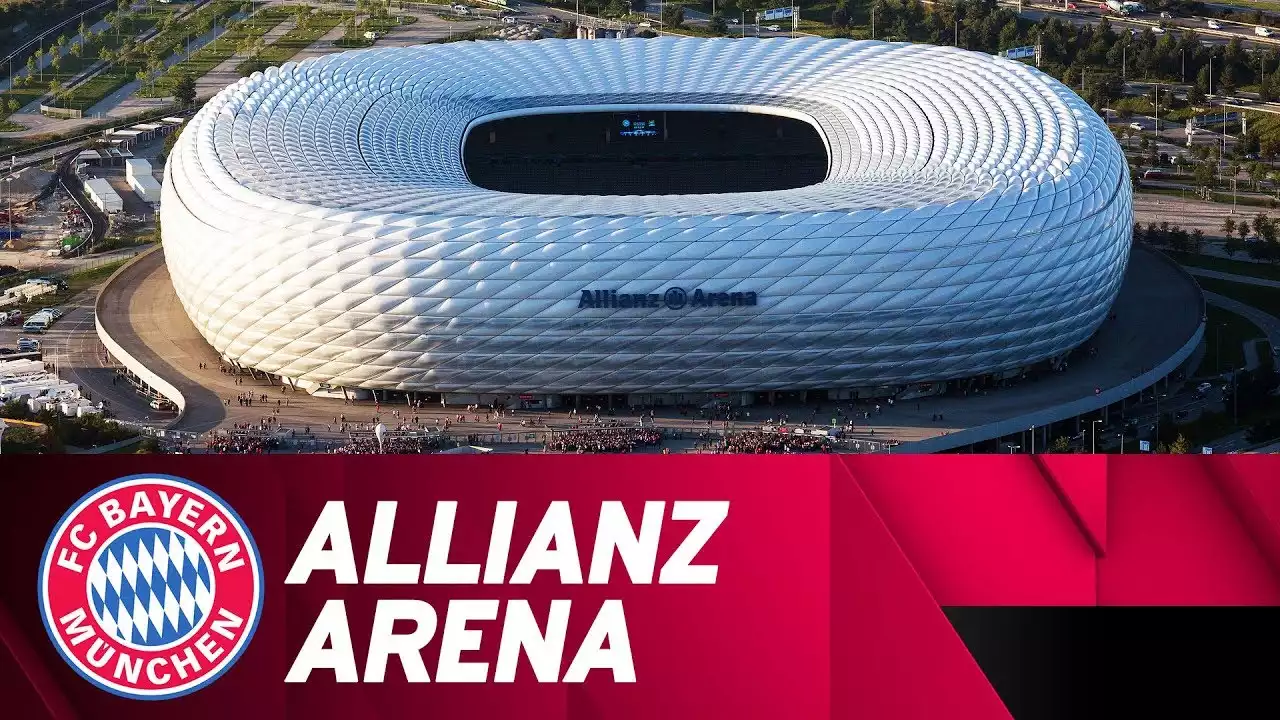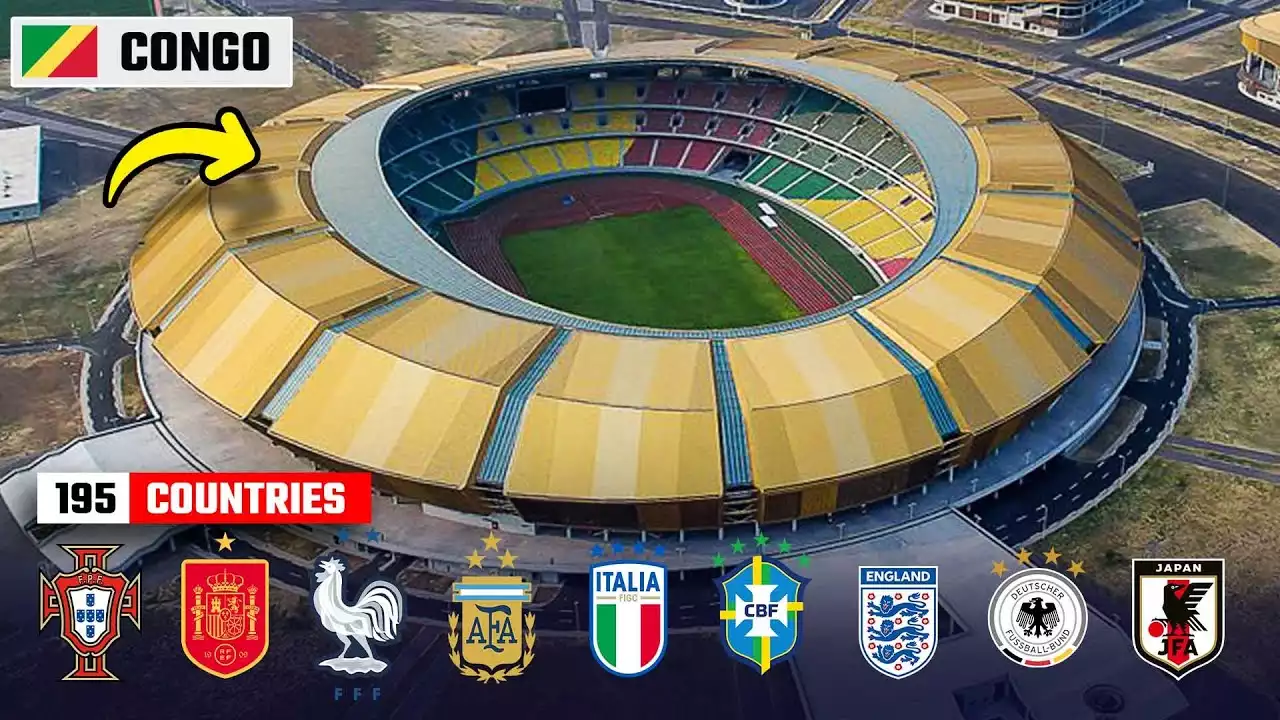Importance of stadiums in football
Stadiums play a crucial role in the world of football. They are not just bricks and mortar; they are the beating heart of the game. These arenas become the battlegrounds where dreams are made and broken, where heroes are born, and where history is written. The size and capacity of a stadium can have a significant impact on the atmosphere, the players' performance, and the overall experience for fans. Let's explore the 5 biggest stadiums in UEFA Nations League history and uncover what makes them so special.
1. Wembley Stadium, London
First up is the legendary Wembley Stadium in London. With a seating capacity of over 90,000, it is not only the largest stadium in the United Kingdom but also one of the most iconic in the world. This colossal structure has witnessed some of the most historic moments in football, including England's World Cup triumph in 1966. The state-of-the-art facilities and the iconic Wembley Arch make this stadium a sight to behold. The atmosphere inside Wembley is electric, with passionate fans creating an unforgettable experience for all who step foot in the stadium.
2. Camp Nou, Barcelona
Next on the list is the Camp Nou in Barcelona, home to FC Barcelona. This cathedral of football boasts a staggering capacity of over 99,000, making it the largest stadium in Europe. The Camp Nou is not just a stadium; it is a symbol of the city's identity and a shrine for football fans around the world. The sheer size of the stadium is awe-inspiring, and the passionate support from the Barca faithful creates an atmosphere like no other. Walking into Camp Nou is like stepping into a cauldron of noise and excitement, where every match feels like an epic battle.
3. Signal Iduna Park, Dortmund
Moving on to Germany, we have Signal Iduna Park in Dortmund. With its famous Südtribüne stand known as "The Yellow Wall," this stadium can accommodate more than 80,000 enthusiastic spectators. The Yellow Wall is an experience like no other, with fans creating a wall of noise, color, and passion that intimidates even the strongest opponents. Signal Iduna Park has witnessed some of the most thrilling matches in football history, with the atmosphere inside the stadium reaching fever pitch. The sheer size and intensity of this stadium make it a must-visit for any football fan.
4. San Siro Stadium, Milan
In Italy, the San Siro Stadium in Milan steals the spotlight. As the home ground of both AC Milan and Inter Milan, this historic stadium has a seating capacity of over 80,000. The San Siro is not just a stadium; it is a symbol of the city's footballing heritage. The stadium's architecture is a blend of tradition and modernity, with its iconic towers standing tall as a testament to the club's history. The atmosphere inside the San Siro is electric, with passionate fans creating an intense and unforgettable experience for all who attend a match.
5. Luzhniki Stadium, Moscow
Last but certainly not least, we have the Luzhniki Stadium in Moscow. Having hosted the 2018 FIFA World Cup final, this architectural marvel can hold an astonishing 81,000 spectators. The Luzhniki Stadium is not just a stadium; it is a symbol of Russian football and a testament to the country's sporting ambition. The stadium's unique design and state-of-the-art facilities make it a world-class venue for international football. The atmosphere inside the Luzhniki is electric, with passionate Russian fans creating an unforgettable experience for all who attend a match.
Impact of large stadiums on players and fans
The size and capacity of these stadiums have a significant impact on both players and fans. For players, performing in front of tens of thousands of passionate supporters can be both intimidating and inspiring. The sheer noise and energy inside these stadiums can push players to give their best and create memorable moments on the pitch. For fans, being part of a large crowd adds to the excitement and atmosphere of the game. The roar of the crowd, the chants, and the collective passion amplify the overall experience, making attending a match in these stadiums an unforgettable event.
Stadium infrastructure and facilities
These massive stadiums are not only about the size and capacity; they also boast state-of-the-art infrastructure and facilities. From cutting-edge technology to world-class amenities, these stadiums offer a premium experience for fans. The facilities range from VIP lounges and corporate boxes to top-class restaurants and bars. The focus is on providing fans with a comfortable and enjoyable experience, ensuring that attending a match is not just about the game but also about the overall atmosphere and ambiance of the stadium.
Future developments and expansion plans
The evolution of stadiums is a continuous process, with many of these iconic venues undergoing renovations and expansions to meet the growing demands of modern football. These developments aim to enhance the fan experience, improve facilities, and increase seating capacity. While maintaining the historical charm and character of these stadiums, the future holds exciting possibilities for even grander and more awe-inspiring arenas.










